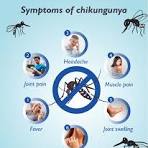INTRODUCTION
Health is wealth—a simple yet profound truth. One sickness can drain a
lifetime of savings, leaving individuals and families in distress. While modern
medicine has made remarkable strides in diagnosing and treating diseases, many
health conditions continue to defy medical solutions, pushing us to explore
alternative approaches.
Natural remedies have been a cornerstone of healing for centuries, long before
the advent of modern pharmaceuticals. Across cultures and civilizations, people
have relied on nature’s gifts—herbs, roots, fruits, and holistic practices—to
restore health and vitality. While this encyclopedia does not seek to undermine
the importance of medical science, it aims to complement it by shedding light
on time-tested natural solutions. It encourages further research into the power of
nature in healing, offering insights into remedies that have provided relief to
countless individuals.
Natural Remedies For Chikungunya
Chikungunya is a viral infection primarily transmitted to humans
through mosquito bites. There is no specific antiviral treatment for
Chikungunya, and recovery relies on managing symptoms. The
following natural remedies may help alleviate symptoms:
1. Papaya Leaf Extract
How it works: Papaya leaves contain enzymes that may help
boost platelet count and relieve symptoms like fever and joint
pain.
Preparation and usage:
Crush a few papaya leaves and extract the juice.
Mix with a little honey (optional) to improve taste.
Consume this juice 2–3 times a day.
Where to find: Papaya leaves can be obtained from papaya trees,
which are widely cultivated in tropical regions.
2. Ginger
How it works: Ginger has anti-inflammatory properties that can
help reduce joint pain and fever associated with Chikungunya.
Preparation and usage:
Slice or grate fresh ginger root.
Boil it in water to make ginger tea.
Drink this tea 2–3 times daily.
Where to find: Fresh ginger is available in local markets close to
you.
3. Turmeric
How it works: Turmeric contains curcumin, which has anti-
inflammatory and analgesic properties that may help reduce joint
pain and inflammation.
Preparation and usage:
Mix 1/2 teaspoon of turmeric powder with warm milk or water.
Consume this mixture once or twice a day.
Where to find: Turmeric powder is readily available in local
markets.
4. Tulsi (Holy Basil)
How it works: Tulsi has immunomodulatory properties and can
help boost the immune system and reduce symptoms.
Preparation and usage:
Chew 4–5 fresh tulsi leaves on an empty stomach in the
morning.
You can also make tulsi tea by boiling tulsi leaves in water.
Where to find: Tulsi plants can be grown at home, and fresh
leaves are widely available in markets.
5. Fluids and Hydration
How it works: Staying hydrated is crucial to manage fever and
prevent complications.
Preparation and usage:
Drink plenty of water, herbal teas, and oral rehydration
solutions.
Avoid alcohol and caffeinated beverages, which can dehydrate
you.
Where to find: Water and herbal teas are readily available.
6. Rest and Pain Management
How it works: Rest allows your body to recover, and over-the-
counter pain relievers like acetaminophen or ibuprofen can help
manage pain and fever.
Preparation and usage:
Follow the recommended dosage instructions on the medication
packaging.
Get adequate rest to help your body heal.
Where to find: Over-the-counter pain relievers are available at
pharmacies.
Key Consideration
Always consult a healthcare professional for a proper diagnosis and
guidance on managing Chikungunya, especially if symptoms are severe
or complications arise. These remedies are supportive and provide
symptom relief but are not a cure for the virus itself.



